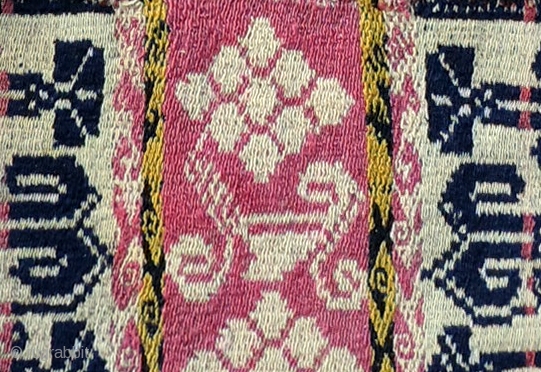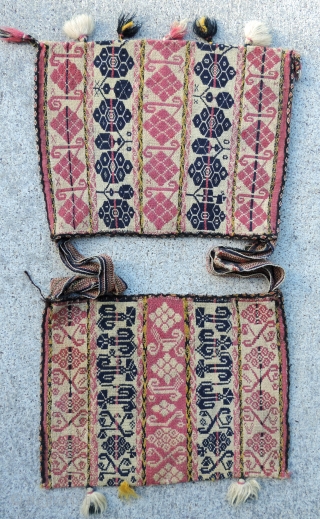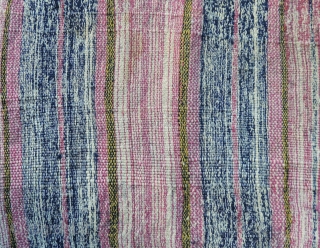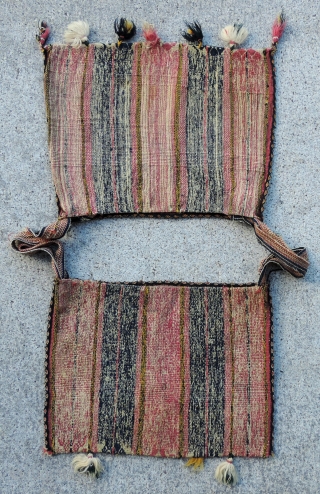Back
Aymara Alforjas, (carrying bags). Late Colonial Period, Bolivia. 18th century. Warp-faced woven bags such as these were worn over the shoulders. They are always made in pairs, but rarely survive as such. The backs of alforjas are always left un-patterned and this is one way to distinguish them from other types of Aymara bags. They are said to be worn by itinerant, traditional healers and were used for transporting various herbal medicines, potions and ceremonial fetishes used in healing rites. Complete pairs are rare and this set is exceptional as regards the quality of weave, completeness and colonial period designs. Highly collectable. Size: approximately 15 x 13 inches each bag. i have other examples available, but this set is special.
price:
SOLD - OTHERS AVAILABLE
- Home
- Antique Rugs by Region
- Category
- Profiles
- Post Items Free
- Albums
- Benaki Museum of Islamic Art
- Budapest: Ottoman Carpets
- Gulbenkian Museum
- Islamic Carpets. Brooklyn
- Islamic Textiles. Brooklyn
- Konya Museum: Rugs
- MKG, Hamburg
- MMA: Caucasian Carpets
- MMA: Mamluk Carpets
- MMA: Mughal Indian Carpets
- MMA: Ottoman Carpets
- MMA: Safavid Persian Carpets
- MMA: Turkmen Rugs
- McCoy Jones Kilims
- Ottoman textiles. Met
- Philadelphia Museum
- Rugs and Carpets: Berlin
- Seljuqs at the Met
- TIEM, Istanbul: Carpets
- V&A: Classical Carpets
- Vakiflar Carpets: Istanbul
- Baluch Rugs: Indianapolis
- Gallery Exhibitions
- Jaf an Exhibition
- Alberto Levi Gallery
- Andean Textile
- Christie's London: 2016
- Francesca Galloway
- HALI at 40
- ICOC Washington, DC 2018
- Jajims of the Shahsavan
- London Islamic Week April, 2018
- Mongolian Felts
- Navajo Rugs: JB Moore
- Persian Piled Weavings
- SF Tribal & Textile Art Show 2020
- SF Tribal 2019
- Sotheby's: C. Alexander
- Turkish Prayer Rugs
- Turkmen Main Carpets ICOC 2007














